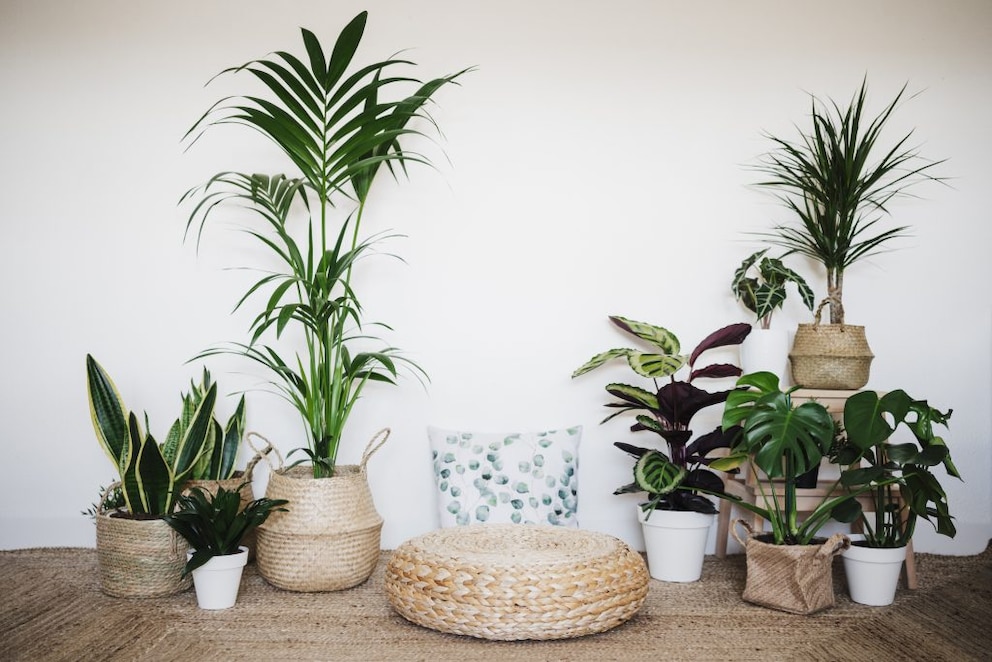December 1, 2022, 4:22 pm | Read time: 4 minutes
Origin, transportation routes, CO₂ emissions, recycling–if you want to live environmentally friendly today, there are several aspects to consider when making purchases. Especially with your own furnishings, which constantly surround us, a certain level of consumer awareness is advisable. To set up your living room sustainably, five tips are particularly helpful.
Conscious consumption is a major topic, especially when it comes to furnishing your own home. The living room, in particular, is often redesigned more frequently than other rooms. To avoid putting too much strain on the environment and your health, it’s important to gather information beforehand, invest wisely, opt for natural materials, and always save energy and resources. Learn how to furnish a living room as sustainably as possible here.
1. Upcycle or Buy Used Furniture
Even though social media, magazines, and furniture stores regularly showcase the most beautiful collections, providing plenty of inspiration for new purchases, it’s now more contemporary to buy used furniture or upcycle old pieces. Enhancing and reusing old items aligns with the core idea of a sustainably furnished living room.

If a piece of furniture has a flaw, it can often be repaired either by yourself or by a professional. Otherwise, dents, scratches, and the like are like scars on the skin—they tell stories. Not everything in a home needs to be perfect. And if you need new furnishings, you don’t necessarily have to opt for new furniture. After all, new doesn’t always mean new.
How about new used furniture instead? The Sunday trip to the flea market has become something of a new national pastime. You might also find a suitable piece in grandma’s attic, at the nearby antique shop, or secondhand online.
2. And What if It Has to Be New Furniture?
Of course, a completely new setup is also conceivable, but each piece of furniture should be chosen very consciously. Ideally, the purchase process focuses not only on design and price but also on aspects like material choice, manufacturing, and transportation.
It’s likely that you’ll enjoy the chosen piece of furniture for a long time. Therefore, it’s advisable to opt for a timeless look and not be swayed by current trends. Furniture made from high-quality, robust solid wood is usually synonymous with durability, making it a suitable choice. However, when purchasing, look for certifications like the FSC label, Blue Angel, or GS mark. If a piece of furniture has one of these labels, it speaks to its quality.
Also interesting: 7 Online Shops for Sustainable Furniture and Accessories
3. Furnish the Living Room with Sustainable Accessories
When it comes to accessories, sustainability can also be prioritized. It’s most sensible to focus on quality over quantity, as a sustainable living room is best furnished with minimalism. So, choose a small selection of accessories, ideally composed of used treasures from the flea market, cherished heirlooms, and a few finds from nature.
All new additions should ideally also be made from natural materials and have the appropriate labels. All textiles in a sustainably furnished living room are made from renewable resources. How about this? Curtains made of linen, sofa cushions from organic cotton, a cozy blanket from wool, and a sisal rug on the floor—bringing in plenty of natural coziness.
4. No Sustainable Living Room Without Houseplants

Clearly, plants belong in a living room if you want to furnish it sustainably. Not only do they add more greenery and naturalness to the ambiance, but they also bring many positive attributes. Plants are said to improve the indoor climate by filtering pollutants from the air, contributing to healthier living. Ideal choices include snake plants, dieffenbachia, pothos, peace lilies, and spider plants. Also optimal are plants that require little water, like succulents or cacti.

Interior Designer Reveals Home Trends for 2023

5 Interior Tips for a Living Room in Industrial Style

How the Kidney Table Became a Furniture Classic
5. Use Eco-Friendly Lighting
If you really want to do something for the environment, opt for LED bulbs. They have an exceptionally low energy consumption, which is not only financially rewarding but also better for the environment. Especially in winter, candles are often lit, bringing warmth to a room while also being easy on the wallet.
However, the type of candle matters. For a sustainably furnished living room, it’s better to choose candles made from beeswax or based on soy, rapeseed, and sunflower oil in glass holders, rather than conventional candles, which are usually made from paraffin or palm oil and packaged as tealights in aluminum holders.

